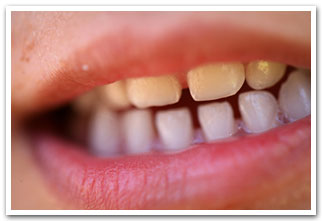Hi everyone!
Everybody deserves a good start in life. Children, just like adults, need good dental hygiene to prepare and preserve their smile for the rest of their lives. But few parents understand the anatomy of their child’s teeth, or know what to expect when it comes to a normal teething sequence. For example, did you know that your baby’s 20 primary teeth, sometimes referred to as “milk” teeth, are present under the gums at birth? Did you also know that it’s normal for teething (tooth eruption) to begin at three months of age?
On average, a baby’s front teeth break through the gum line at six to eight months of age. Followed by the eruption of back teeth at 18 to 24 months, and teething will continue until all 20 primary teeth are in place at approximately 2 ½ years of age. The tooth eruption actually occurs in the following sequence:
- Two lower front teeth or central incisors between 6 and 10 months.
- Four upper front teeth or central and lateral incisors between 8 and 12 months.
- Two upper lateral incisors between 9 and 13 months.
- Two lower lateral incisors between 10 and 16 months.
- First upper molars between 13 and 19 months.
- First lower molars between 14 and 18 months.
- Four canines or eye teeth – next to the upper and lower lateral incisors on either side between 16 and 23 months.
- Remaining molars on either side of the existing teeth between 23 and 31 months.
What is the point of baby teeth if they fall out anyway?
The misconception about primary teeth is since they fall out to make room for the eventual 32 adult permanent teeth than they don’t really matter. But the fact is they really do matter. Essentially, they act as guides for the eruption of the permanent teeth to come. As guides, their existence is to ensure that permanent teeth enter in the appropriate places. If baby teeth are lost through decay, there is a greater chance that adult teeth will either be blocked by other incoming teeth or come in crooked.
Another thing to think about is that if tooth decay is present in baby teeth it can all too easily be passed on to the developing adult teeth as they break the gum surface. A child with decay in their primary teeth passes cavity causing bacteria onto the newly erupting permanent teeth. A good scenario of this transmission of tooth decay happens when the primary molars, which remain in a child’s mouth until 10 or 12 years of age pass cavities to their neighbors.
Baby teeth also influence the growth and development of the jawbone structure and facial muscles. More importantly, if the decay spreads to the root and an infection develops, damage to the permanent teeth lying underneath is possible, not to mention the accompanying pain.
The Mixed Dentition Stage
Perhaps the most important time for a child’s dental care is that in-between stage called mixed or transitional dentition. This phase or stage describes the mix of both primary and adult permanent teeth existing in a child’s mouth between 6 and 13 years of age. At six years old, the new permanent teeth are not fully mature and are extremely susceptible to tooth decay. As you can imagine, the first few years of eruption of permanent teeth is critical. The “six-year molars” are extremely prone to cavities. Also when there is a mix of both baby and adult teeth in a youngster’s mouth, the uneven bite, length and shape of individual teeth can make it even more difficult to protect and clean with brushing and flossing alone. We typically place sealants, a tooth colored composite resin, over the tops of the 6 and 12 year molars as soon as they erupt. Fluoride toothpaste and hygienist applied fluoride varnish are used to additionally protect these teeth. And of course the most important factor in cavity proneness is a proper diet low in the amount and frequency of processed simple carbohydrates and sugars.
At Dr. Langberg’s cosmetic and general dentistry, we look forward to being your ultimate guides to better oral and dental health. Along the way, we encourage you to share with us your concerns and questions about your teeth, preventative treatments and other dental services. Our dental team of highly trained and skilled assistants and hygienists will work with you to provide a comfortable, anxiety-free and relaxed experience that will have you grinning from ear to ear. Because at Dr. Langberg’s, we’re committed to modern dentistry at its best, and we just love to show it to you!
Thanks for your time,
Mark W Langberg, DDS, MAGD
248-356-8790
